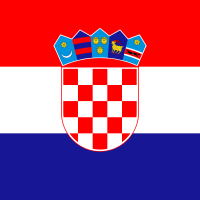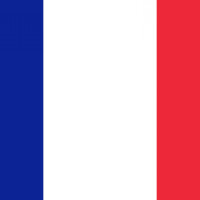Robic S., Rogulj, I. (2021) Energy poverty in Croatia, EP-pedia, ENGAGER COST Action.
Perspective on energy poverty in the policy debate of Croatia
Several reports (Robić et al., 2016; Ančić, B., Domazet, M., Grbavac, K., 2015; Božičević,M., Grubješić, S., Robić, S., Rogulj. I., 2015; Robić, S. 2016) have analysed energy poverty as a phenomenon in Croatia. These were mostly aimed at decision and policy makers. In recent years, a positive trend of increased visibility of the topic in the public discourse has been noticed. Although there is still no agreement on the definition of energy poverty in Croatia, the term has “energy poverty” has been used in a few legislative and strategic documents, as mentioned below.
There is also still no clear definition of vulnerable energy customers in Croatian legislation. At the moment, energy vulnerability is defined merely by social criteria meaning that vulnerable customers of energy are, according to the law, the recipients of guaranteed minimal financial support (social welfare) and recipients of disability support. The lack of clear definitions results in a lack of data on the number and types of vulnerable energy customers and on how many of them are at risk of becoming energy poor. A definition of energy poverty is needed to enable statistical monitoring, while broader definition of energy vulnerability is needed for better policy targeting.
Energy poverty-related issues are covered in several pieces of legislation: Energy Act (OG 120/12, 14/14, 95/15, 102/15, 68/18), Electricity Market Act (OG 22/13, 95/15, 102/15, 68/18, 52/19), The ordinance on criteria for acquiring the status of vulnerable energy customer (OG 95/2019), The Act on Social Welfare (OG 157/13, OG 152/14, 99/15, 52/16, 16/17, 130/17, 98/19, 64/20), Energy Efficiency Act (OG 127/14), 4th National Energy Efficiency Action Plan (NEEAP) 2017-2019, National Integrated Energy and Climate Plan (2019) and the Programme for Renovation of Family Houses (2020)
The Croatian Energy Act (OG 120/12, 14/14, 95/15, 102/15, 68/18) was first adopted in 2012 and then amended several times over the following years, with the last amendment being made in 2018. It equates vulnerable energy customers with socially vulnerable citizens. The law also adds that citizens with permanent health disabilities or health deterioration have the right to a supply of energy according to special conditions, which are, for electricity as energy carrier defined in the Electricity Market Act. Article 39 of the law then states that more detailed criteria defining citizens vulnerable to energy poverty will be set through an ordinance. Based on article 39, in 2015, two ordinances were adopted, one on the criteria for acquiring the status of vulnerable energy customer, and the second on criteria for acquiring the status of a protected customer.
According to article 65 of Electricity Market Act (OG 22/13, 95/15, 102/15, 68/18, 52/19) customers from the category of households who have the right to electricity supply within the universal service and who choose or automatically use that method of supply and have obtained a decision from the competent social welfare centre on the status of vulnerable customer, have the right to special protection in accordance with the provisions of this Act and laws governing the energy sector and regulations on health care and social welfare. These protected customers are guaranteed to have supply of electricity in case of crisis, i.e. the threat of disruption of energy supply.
The ordinance on criteria for acquiring the status of vulnerable energy customer (OG 95/2019), which is the bylaw arising from the above mentioned Energy Act,defines energy vulnerable customers as those who are recipients of guaranteed minimal support or of disability support and entitles them with monthly deduction of their electricity bills, The deduction is set to 200 HRK net, with the funds for that allocation collected through a charge of 0.03 HRK/kWh used paid for by all electricity customers in Croatia. The same ordinance also states that prior to making decisions on disconnections for non-payment, suppliers are obliged to consult the competent social welfare authority and check the customer's vulnerability status.
The Air Protection Act (OG 130/11, 47/14) from 2014 defines, in its Article 100, that financial means acquired through selling emission permits by auctioning on the EU emission trading system are paid to a special account of the Environmental Protection and Energy Efficiency fund. The financial resources gathered in this manner are spent according to a plan made by the Government upon the proposal of the competent Ministry. Article 100 lists several possible uses for these funds and one of them is funding measures intended to increase energy efficiency. The fourth National Energy Efficiency Action Plan (NEEAP) 2017-2019 proposes measures for energy efficiency improvements in Croatia, some of which should be financed via the funds provided from the polluter pays principle and EU Emissions Trading Scheme earnings, meaning those funds could also to some extent be used for mitigating energy poverty. In the fourth Croatian NEEAP there are two measures defined for mitigating energy poverty. One of the measures is capacity building to alleviate energy poverty, which consists of mechanisms for advising vulnerable customers, as well as the implementation of low-cost energy efficiency measures in households at risk of energy poverty. A second measure is the Energy Poverty Reduction Programme. This measure envisages the design and launch of a systematic programme to mitigate energy poverty, including finally bringing the definition of energy poverty in Croatia; it should also provide tools for alleviating energy poverty through implementation of various energy efficiency measures in vulnerable households.
The Act on Social Welfare (OG 157/13, OG 152/14, 99/15, 52/16, 16/17, 130/17, 98/19, 64/20) states that all recipients of guaranteed minimal income have a right to a financial assistance towards housing and associated bills, including energy bills.
This financial assistance is delivered by the local authorities and success of its delivery greatly depends upon each local authority’s budget.
Article 43 of this act enables the provision of reimbursements for households using fuel wood, providing them with 3 m3 of fuel wood or the financial equivalent. The decision of this reimbursement is made by local authorities on a yearly basis.
The Croatian Energy Efficiency Act (OG 127/14) defines obligations for achieving energy savings through energy efficiency measures for Energy Distributors in its Article 13. Energy distributors are obliged to achieve energy savings in final energy consumption by implementing energy efficiency measures. The cumulative goal for new energy savings in final energy consumption, alternative measures, criteria for calculating energy savings, energy savings methodology, obligatory savings quotas for every energy distributor, etc., have to be defined in by-law.
A new legislative framework sent in draft to European Commission, mainly National Integrated Energy and Climate Plan (2019), includes energy poverty related measures in different paragraphs; one of these measures is developing and implementing a Programme for mitigating energy poverty. Chapter 2.4.4 states that in the period from 2021 to 2030, measures to combat energy poverty will be implemented under the Energy Poverty Programme with the following objectives: provide energy advice for all energy-poor citizens of the Republic of Croatia, establish a system of measurement and monitoring of indicators describing energy poverty at the national level, and establish a system for increasing energy efficiency at the level of energy-poor households and for households at risk of energy poverty. The programme is to define criteria for energy poverty.
As for the new version of the Programme for Renovation of Family Houses (2020), there is an active multi-sectoral working group whose goal is to define and find means to target and protect vulnerable consumers in the implementation of the Programme. The programme resulted in a first call being published for houses affected by energy poverty in 2020. The call enabled recipients of social welfare who have a recommendation from their social welfare office and who are owners of their houses to be eligible for 100% funding for full retrofitting of the building envelope and installation of renewable energy sources (RES) in addition. They also get free energy auditing (where the energy auditors are paid directly through the National Fund for Energy Efficiency and Environmental Protection) and fully subsidized support in organising the contractors. There was 32 million HRK (4.2 million Euro) dedicated to this in summer/autumn 2020.
Perspective on energy poverty research in Croatia
Very little research has been done on energy poverty in Croatia. A few research papers focus fully or partially on the topic namely:
- Grdenić, G., Delimar, M., & Robić, S. (2020). Framing the context of energy poverty in Croatia: A case-study from Zagreb. Energy Policy, 147, 111869.
- Robic, S., Ančić, B. (2018). Exploring Health Impacts of Living in Energy Poverty: Case Study Sisak -Moslavina County, Croatia. Energy and Buildings. Vol. 169, 15 June 2018, 379-387.
- Robic, S., Rogulj, I., & Ančić, B. (2018). Energy poverty in the Western Balkans: adjusting policy responses to socio-economic drivers. In: Simcock, N., Thomson, H., Petrova, S. and Bouzarovski, S. (eds.) Energy Poverty and Vulnerability: A Global Perspective. London: Routledge.
- Živčič, L., Tkalec, T., & Robić, S. (2016). Energy poverty: practical and structural solutions for South-East Europe. Sociology and Anthropology, 4, 789-805.
Energy poverty has also been analysed in a dissertation on the efficiency of district heating system models and energy poverty (Pudić, 2015).
Ančić, B., Domazet, M., Grbavac, K. (2015).Energy Poverty: Research report on energy poverty in Petrinja. IDIZ, Zagreb. http://www.door.hr/wp-content/uploads/2016/06/Energetsko-siroma%C5%A1tvo-u-Petrinji.pdf
Božičević,M., Grubješić, S., Robić, S., Rogulj. I. (2015). Analysis of gap between societal and energy policy in Croatia. DOOR
Grdenić, G., Delimar, M., & Robić, S. (2020). Framing the context of energy poverty in Croatia: A case-study from Zagreb. Energy Policy, 147, 111869. https://doi.org/10.1016/j.enpol.2020.111869
Pudić, D. (2015). Establishing an efficient model of district heating in Croatia and energy poverty. Doctoral thesis. Faculty of Economics in Osijek. https://dr.nsk.hr/en/islandora/object/efos%3A861
Robić, S. (2016). Energy Poverty in Croatia – field study results for Sisak-Moslavina County. ISBN 978-953-7932-07-7. http://www.door.hr/wp-content/uploads/2016/04/Energetsko-siromastvo-u-Hrvatskoj.pdf
Robić, S. et al. (2016). Energy Poverty in South East Europe: Surviving the Cold. http://seechangenetwork.org/wp-content/uploads/2016/10/Energy-Poverty-in-South-East-Europe_Surviving-the-Cold.pdf
Rogulj, I. & Robić, S. (2014). Mapping the national situation on energy poverty – Croatia. DOOR, REACH. http://reach-energy.eu/bg/wp-content/uploads/sites/4/2014/10/D2.2-DOOR_EN.pdf




